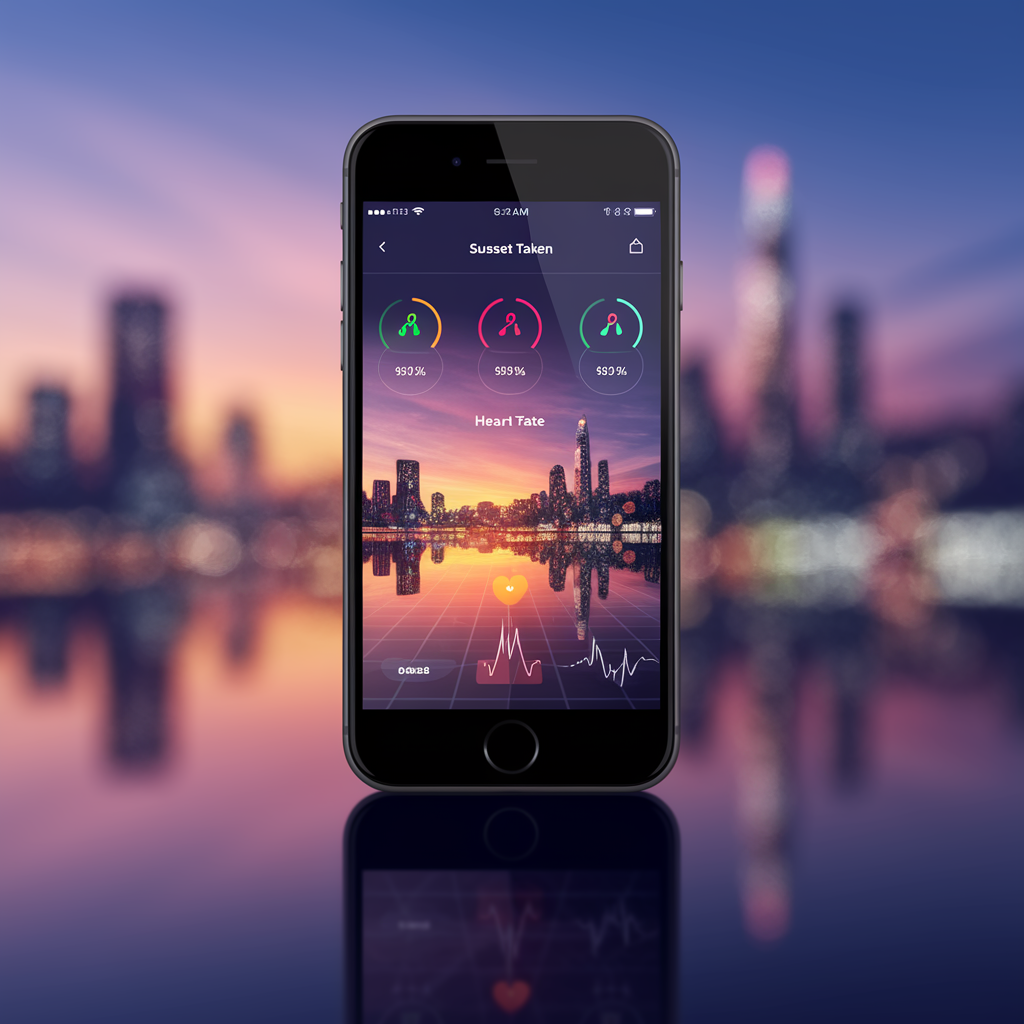Navigating the World of Fitness Apps and Wearables
In an age where technology seems to encroach upon every aspect of our lives, it’s hard to ignore the growing trend of fitness apps and wearables. I remember when I first strapped on my first fitness tracker; it felt like I was wearing a badge of honor. Ah, the thrill of seeing my steps count accumulate like points in a video game! But as I dove deeper into this sea of gadgets and applications, I realized that navigating this world isn’t as straightforward as it appears. So, let’s take a stroll through the myriad options available, separating the gems from the gimmicks, shall we?
The Explosion of Fitness Tech
Fitness technology has exploded in recent years, with a dizzying array of options flooding the market. From smartwatches that can monitor your heart rate and sleep patterns to apps that provide personalized workout plans, the choices are nearly limitless. It seems every week there’s a new app claiming to be the next best thing for your health. According to a recent report, the global fitness app market was valued at approximately $4 billion in 2020, and it’s projected to keep climbing. That’s a staggering number!
But with so much on offer, one might wonder—how do we sift through the noise? The key lies in understanding your personal fitness goals and how technology can help you achieve them. Are you looking to shed a few pounds? Build muscle? Or perhaps you’re just trying to maintain your current fitness level? Identifying your objectives can make the journey through the fitness tech maze much more manageable.
Types of Fitness Apps
Let’s dive into the different types of fitness apps you’ll encounter. I mean, it’s all well and good to know there are apps out there, but which ones do what? Here’s a breakdown:
- Workout Apps: These are designed to provide you with workout plans and routines tailored to your fitness level. Think of apps like Nike Training Club or MyFitnessPal.
- Health Tracking Apps: These apps focus on monitoring your overall health. They often include features for tracking your diet, sleep, and vital stats like heart rate and blood pressure.
- Nutrition Apps: If you’re looking to keep an eye on your calorie intake or meal plan, apps like Lose It! or MyPlate can be incredibly helpful.
- Social Fitness Apps: These apps introduce a social element to your fitness regime. Platforms like Strava allow users to share their workouts and compete with friends or even strangers.
It’s essential to choose an app that fits your lifestyle. Personally, I’ve found that a combination of a workout app and a nutrition tracker works wonders for me. (But hey, that’s just me!)
Wearables: The Next Level
If apps are the engine of the fitness tech revolution, wearables are the sleek, shiny vehicles that transport us to our fitness goals. From smartwatches to fitness bands, these devices provide real-time data that can be invaluable in your fitness journey. They can track everything—from steps taken to calories burned, sleep patterns, and even stress levels. It’s like having a mini personal trainer on your wrist!
When I first started using a fitness tracker, I was shocked—SHOCKED, I tell you—at how little I moved during the day. It turned out that my penchant for couch-sitting was more detrimental to my health than I’d like to admit. So, I made it my mission to hit those 10,000 daily steps. And let me tell you, that was a challenge! However, the wearables did more than just count my steps; they provided motivation. Seeing my progress each day gave me that extra push to keep moving.
Popular Wearables and Their Features
Now, let’s take a closer look at some of the most popular fitness wearables on the market today:
- Fitbit Charge 5: This sleek device offers comprehensive health metrics, including heart rate, sleep tracking, and even stress management. I’ve seen people rave about its user-friendly interface!
- Apple Watch Series 7: More than just a fitness tracker, the Apple Watch integrates seamlessly with your iPhone. It tracks workouts, monitors your heart, and even sends notifications to keep you connected.
- Garmin Forerunner 245: This one is favored by serious runners. It provides advanced metrics for running dynamics, training status, and even recovery time—perfect for those who take their training seriously.
- Whoop Strap: Known for its subscription model, Whoop offers insights on your recovery, strain, and sleep. It’s like having a coach in your pocket (well, sort of).
Of course, wearables can get pricey. I once thought I’d treat myself to a high-end smartwatch, but after a month of wearing it, I realized I mostly used it for checking the weather and notifications. (Spoiler alert: I still forgot my umbrella!)
The Science Behind the Data
At this point, you might be wondering if all this data actually translates to better health outcomes. Some studies suggest that tracking your fitness can lead to improved performance and adherence to workout routines. A study published in the Journal of Medical Internet Research found that individuals who used wearable technology were more likely to increase their physical activity levels compared to those who didn’t.
However, it’s essential to approach these findings with caution. Just because you have a fancy gadget doesn’t mean you’ll automatically transform into an Olympic athlete. The key is using the data wisely. For instance, I learned that my heart rate spikes during high-intensity workouts, which taught me to listen to my body and adjust my training accordingly.
Setting Realistic Goals
Another crucial aspect of utilizing fitness apps and wearables is setting realistic goals. We’ve all been there—starting with grand ambitions only to fizzle out after a few weeks. (I still have a pair of running shoes collecting dust in my closet.) It’s vital to set achievable goals and gradually increase your intensity over time. This approach not only helps you stay motivated but also minimizes the risk of injury.
Consider using the SMART criteria when setting your goals: Specific, Measurable, Achievable, Relevant, and Time-bound. For example, instead of saying, “I want to get fit,” aim for something like, “I will run three times a week for 30 minutes each session for the next month.” Now, that’s a goal you can work with!
Staying Motivated with Technology
One of the most significant benefits of fitness apps and wearables is the ability to track progress and stay motivated. Seeing those numbers climb can be a huge boost. But sometimes, life gets in the way—there’s work, social commitments, and let’s not forget the occasional Netflix binge. So how do you maintain motivation amidst the chaos?
Here are a few strategies that have worked for me:
- Join Challenges: Many fitness apps offer challenges where you can compete with friends or other users. There’s something about a little friendly competition that ignites the fire within!
- Set Milestones: Celebrate your progress by setting milestones. Whether it’s a specific number of workouts completed or a distance run, rewarding yourself can keep the enthusiasm alive.
- Engage with the Community: Social features on apps like Strava can help you connect with like-minded individuals. Sharing your journey and supporting others creates a sense of accountability.
Of course, I’ll be the first to admit that I’ve fallen off the bandwagon more times than I can count. But the beauty of technology is that it’s always there, waiting for you to jump back in. Just remember, the journey to fitness isn’t a sprint; it’s a marathon.
Potential Pitfalls and Considerations
While all this tech can be beneficial, it’s essential to remain aware of potential pitfalls. Not every app or wearable is created equal. I once downloaded an app that promised tailored workouts but ended up giving me routines that made me feel like I should be training for the next Ironman. (Spoiler: I was not ready for that.) Here are a few things to consider before diving in:
- Data Overload: Sometimes, too much information can be overwhelming. Focus on the metrics that matter to you and don’t get bogged down in the details.
- Cost: Fitness wearables can be expensive. Make sure you’re investing in something that aligns with your fitness goals and lifestyle.
- Privacy Concerns: Be aware of how your data is being used. Many apps collect personal information, so read the privacy policies before signing up.
Getting Started: A Step-by-Step Guide
If you’re feeling inspired and ready to embark on your fitness tech journey, here’s a simple step-by-step guide to get you started:
- Identify Your Goals: Reflect on what you want to achieve. This will guide your choice of apps and wearables.
- Research: Take the time to read reviews and compare different apps and wearables. Look for features that align with your goals.
- Start Small: Choose one app to begin with. Familiarize yourself with its features before adding more to your routine.
- Track Your Progress: Consistently log your workouts and progress. This will help you stay motivated and see how far you’ve come.
- Adjust as Needed: If something isn’t working for you, don’t be afraid to switch things up. Fitness should be enjoyable, not a chore!
As a final note, remember that technology is a tool, not a magic wand. It can enhance your fitness journey, but the real work comes from within. Whether it’s through a smartwatch, a fitness app, or even just good old-fashioned determination, the path to health and wellness is ultimately yours to forge.
Conclusion: Finding Balance in the Tech-Driven Fitness World
As I sit here reflecting on my own fitness journey—filled with ups, downs, and a few too many pizza slices—I realize that fitness apps and wearables have become integral companions. They offer insights, motivation, and a way to track progress that simply wasn’t available a decade ago. Yet, it’s essential to approach them with a clear mindset and realistic expectations.
In the end, fitness is about finding what works for you. Whether you’re a tech enthusiast ready to embrace every gadget or a more traditionalist who prefers the simplicity of a good old-fashioned workout, there’s room for everyone in the fitness world. So, lace up those shoes, download that app, and get moving. You’ve got this!







